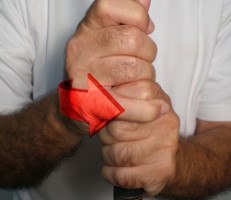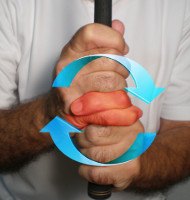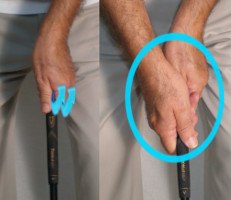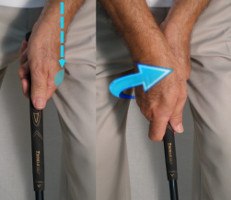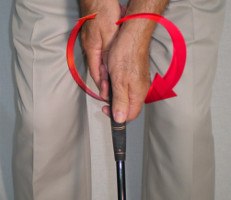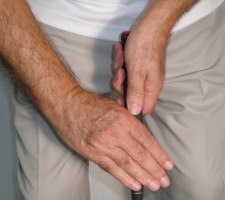Pros and Cons of Every Golf Grip Style |
Best Grip? Overlapping vs Interlocking |
Grip style: Interlocking |
Hand position: Neutral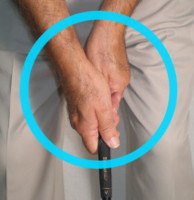 |
Putting grip style / hand position: Reverse overlap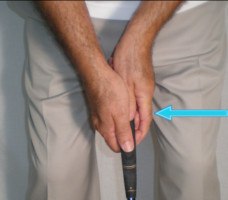
|
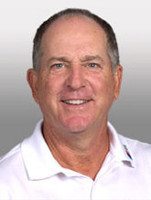
Like son, like father? Not when it comes to holding the golf club.
Jay Haas’ grip, unlike his son Bill’s, is an interlocking model in neutral mode. This may well be a sign of a generation gap. When Jay turned pro in 1976, neutral grips were much more in vogue than in Bill’s day, when the power-producing strong grip rules.
At address, the elder Haas displays a beautifully matching pair of hands. The back of his left hand is nearly perpendicular to the target line, his glove’s logo pointing at the target. The “V” on Haas’ right hand (check the base of the thumb and index finger) is aligned with the club’s handle.
Given his solid grip, it’s no surprise Haas was one of the PGA TOUR’s straightest hitters, a distinction he carried to the Champions Tour in 2004. A nine-time winner on the youngsters’ set who’s claimed 17 titles as a senior, Haas is also noted for the unusual pause at the top of his backswing.
As with the full-swing grip, father and son also diverge on the greens. Jay Haas’ grip with the putter is a reverse overlap job, like his son’s, but with the hands in strong positions (whereas Bill’s are neutral).
If you have a hard time releasing the blade through impact – perhaps you tend to push your putts right of the cup – try rolling your hands a touch to the right on the handle. It works for Jay Haas. He ranked among the Champions Tour’s top 20 in putting average every year from 2007-14, finishing third at age 60 in 2014.
